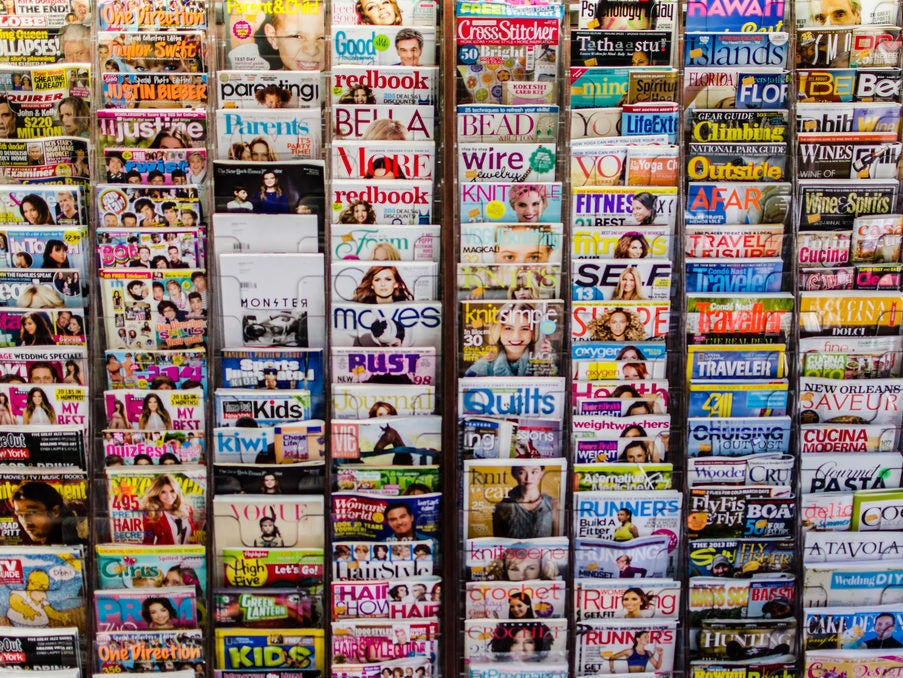
America’s largest magazines retained 95% of their circulation through the Covid-19 crisis, Press Gazette research suggests.
Strong print subscription bases and growing digital issue readership have helped the likes of Vanity Fair, Vogue and the New Yorker grow over the past year.
Our analysis of Alliance for Audited Media (AAM) figures suggests that magazines have fared better than newspapers through the pandemic.
Press Gazette’s ranking of the 50 biggest US magazines by circulation shows that print remains the sector’s dominant medium, despite subscription and single-copy sales falling in recent years.
Click here to subscribe to Press Gazette’s must-read newsletters, Future of Media and Future of Media US |
On average across the top 50, print subscription circulations have fallen by 7% over the past two years, from 125m overall to 116m, while single-copy sales are down 11%, from 3.2m in the first half of 2019 to 2.8m in the first half of this year.
Digital subscription circulations, which include magazine readership through aggregators like Apple News+, have grown by 70% in the same period, from 4.3m to 7.3m.
As our top 50 ranking below shows, the two largest magazines in the US – with average circulations of more than 22m – are distributed to members of the American Association of Retired People (AARP).
Better Homes And Gardens and People, both part of Meredith, are the next highest, with circulations of 7.6m and 3.4m respectively.
Good Housekeeping (3.3m, Hearst), Reader’s Digest (2.7m, Trusted Media Brands), Southern Living (2.8m, Meredith), Shape (2.5m, Meredith), Woman’s Day (2.4m, Hearst) and Cosmopolitan (2.2m, Hearst) make up the rest of the top ten.
A note about the workings: This table shows the 50 largest US magazines that are audited by the AAM. The total figure includes paid circulation and ‘verified’ circulation, but not non-paid circulation. Verified circulations include copies that are made free to the public by businesses, e.g. hotels. The exclusion of non-paid circulations means that the third largest magazine on AAM records – Costco Connection – is not included in our ranking. Reader’s Digest loses around 350,000 from its circulation because of the exclusion of non-paid copies.
It is worth noting that the size of the AARP’s two magazines – classified as paid-for by the AAM because they are included in membership costs – skews the balance of average print-versus-digital circulations.
But, as demonstrated in the pie charts below, print subscriptions still dominate the overall circulations of other large US magazines.
After the AARP titles, the magazines with the next largest print subscription circulations are Better Homes And Gardens (Meredith), Good Housekeeping (Hearst) and People (Meredith).
Note: The below figures are for individual print subscriptions. They do not include verified or non-paid print subscriptions.
Us Weekly, Men’s Journal and Star Magazine – which does not make the top 50 list – have the largest digital circulations, according to the AAM. All three are owned by A360 Media, which declined to provide comment for this article.
Note: The below figures are categorised by the AAM as paid digital subscription circulations. They include “individually paid, partnership, sponsored and multi-title” platforms including Apple News+ and Readly.
The titles that have retained the best single-copy sale circulations – in spite of Covid-19 disruption to the retail world – are Bauer’s First For Women and Woman’s World, neither of which made it into the top 50. People magazine comes third for single-copy sales.
Note: Single-copy sales figures below are predominantly print rather than digital. The highest-ranking title for single-copy digital sales specifically was People, with an average of 396 copies per week.
According to MPA, the Association for Magazine Media, 221.9m American adults read magazines in 2020, down from 224.6m in 2018.
The MPA’s recent Magazine Media Factbook report said: “Covid-19 shut down America, limiting pass-along readership [in 2020].” But it added that publishers are expecting “readership to bounce back when the public returns to shared spaces”.
Photo credit: Michele Ursino
Email pged@pressgazette.co.uk to point out mistakes, provide story tips or send in a letter for publication on our "Letters Page" blog
